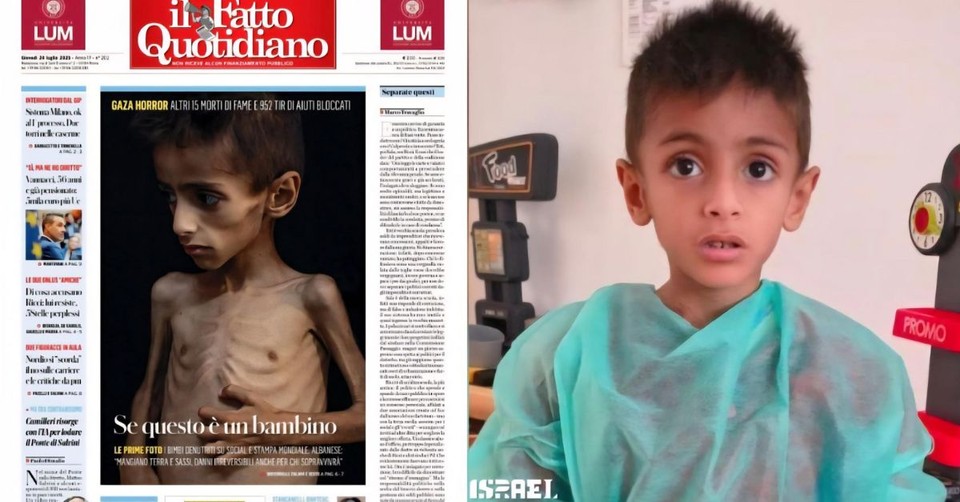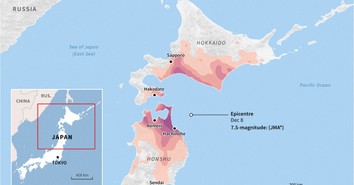False Famine and the Propaganda against Israel

In an era where information travels faster than ever, the deliberate misuse of images and narratives to shape public opinion has become a potent weapon. A recent and glaring example involves a picture of a sick child in Gaza, falsely portrayed as a victim of starvation caused by Israel. It’s egregious that photos of the 5-year-old boy have been misused to depict Israel as responsible for his condition, buffering claims that Israel is starving children.
The fact is that he suffers from a serious genetic illness unrelated to the war. But had Hamas not pilfered billions in financial aid to build up a network of terror, perhaps today there would have been medical facilities in Gaza in which he could be treated. On June 12, Israeli troops coordinated his evacuation from Gaza, along with his mother and brother.
Fake News That Fuels Hatred
This case exemplifies how fake news is crafted and disseminated to vilify Israel, exploiting vulnerable children, to fuel anti-Israel narratives. The manipulation of this image, which demonstrates allegations of famine in Gaza, made headlines in major outlets like The New York Times, CNN, Sky News, The Guardian, Daily Mail, Daily Express, and others (just in English). It reveals a troubling pattern of media bias and the distortion of truth to demonize a nation. Even worse, it depicts a lie.
The picture depicts a frail child, seemingly on the brink of death, being comforted by his mother. Widely circulated, it was presented as evidence of a famine in Gaza, with Israel cast as the perpetrator. Far from being the cause of his suffering, Israel facilitated his medical evacuation for treatment. The image, while real, was stripped of its context and repurposed to fit a narrative that falsely accused Israel of causing famine in Gaza. This deliberate misrepresentation is not an isolated incident but part of a broader strategy to manipulate public perception and demonize Israel.
Preying on Compassion for Children
The exploitation of this child’s image is particularly egregious because it preys on universal empathy for suffering children. Anyone with an ounce of compassion would hesitate to use a sick child’s image in such a manipulative way. Yet, the media’s rush to publish this image without verifying its authenticity suggests gross negligence or intentional bias. The picture’s prominence on the front pages of global media outlets amplified its impact, reaching tens of millions, creating a false narrative in the public consciousness. By the time corrections or retractions are issued—if they are at all—they are often buried in obscurity, unable to undo the damage caused by the initial “report.”
Discerning Inconsistencies the Media Ignores
There are other inconsistencies that any serious media should run to question. Pictures of allegedly starving children often show them alongside well-fed parents, raising questions about their plausibility. If famine were truly ravaging Gaza, would parents be hoarding food, appearing well-fed in their own pictures, leaving their children to suffer?
If there were real starvation, why would the media need to resort to fake or out-of-context images? The answer lies in the absence of actual evidence for widespread starvation. Is there suffering, sure. Are people hungry, no doubt. Are hundreds or thousands of children dying of starvation, where’s the evidence?
What Israel Has Actually Done
Israel has facilitated the delivery of hundreds of millions of meals to Gaza’s 2.3 million residents, yet organizations like the United Nations and Hamas have obstructed food distribution. The media’s failure to report on these truths, while promoting misleading images, underscores a selective narrative designed to blame Israel.
A Pattern of Distortion and Media Complicity
Since the Hamas attack and massacre on October 7, 2023, other images have been falsely presented as evidence of Israeli wrongdoing in Gaza. These deliberate misrepresentations are not accidental. The media’s complicity in this propaganda is further evidenced by its reluctance to highlight the suffering caused by Hamas, which uses Palestinian Arab children as human shields for their own agenda. By focusing on fabricated narratives about Israel, the media diverts attention from real humanitarian crises in places like Syria, Yemen, and Iran, where jihadi groups and regimes perpetrate widespread suffering.
The Importance of Context in Reporting
In 1989, I was the driver for then Deputy Foreign Minister Benjamin Netanyahu. He came to Atlanta for one meeting with CNN writers and editors, emphasizing the importance of context in reporting on Israel. While he was generally well-received, truth, facts, and context are often trumped by the need for ratings. Without context, stories about Israel are easily distorted to fit preconceived biases. The media’s failure to provide this context, coupled with its eagerness in this case to publish unverified images, suggests a deeper agenda. The rush to be the first to publish often overrides the responsibility to verify facts, resulting in the spreading of lies.
Who Is Accountable?
If I had taken and promoted the photo of a child, and used that to misrepresent truth or use that child’s image in the cause of some other agenda, I would be sued. Accused of abuse. So who took the photo? Who gave permission to use it? Was anyone held accountable for doing so? Or is it just part of a fraud beginning even with the child’s mother?
Modern Antisemitism Masquerading as Journalism
While many anti-Israel voices immediately jump to decry those defending Israel “playing the antisemitism card,” the reality is that the roots of this manipulation lie in a broader antisemitic agenda. The infamous Nazi propaganda chief Joseph Goebbels used a strategy of accusing one’s enemy of the very crimes one is committing. In this case, the media, along with entities like the UN and jihadi Islamic groups, accuse Israel of causing Palestinian suffering while ignoring or enabling the actions of those truly responsible. This demonization of Israel is a core element of modern antisemitism, with lies fabricated in a shotgun approach of publishing outrageous headlines and images at such a wide pace that even if only one or two hit their target, it shapes public opinion before the truth can catch up.
The consequences of this fake news are profound. By exploiting images of vulnerable children, the media not only misleads the public but also perpetuates harmful stereotypes about Israel and the Jewish people. Rather than showing an image of a boy whose life may have been saved by Israel’s intervention, he became the poster child in an antisemitic propaganda campaign. It is child abuse, the weaponizing the suffering of innocents to advance a political agenda.
Moreover, the media’s selective focus on Israel distracts from other global crises. While jihadi groups burn churches in Syria, massacre Druze communities, slaughter Christians across Africa, and devastate civilians in Yemen and Iran, these stories receive far less attention than fabricated narratives about Israel. This double standard reveals a troubling bias, where Israel is consistently singled out for condemnation while other human rights abuses are overlooked.
The Fake Famine Lie Won’t Fade Easily
The persistence of such fake news propagating a fake famine is unlikely to abate, even after being exposed as a lie. The manipulation of images like that of the sick Gazan child is not just a distortion of facts but a deliberate attempt to demonize Israel, perpetuating antisemitism under the guise of journalism. At best, these media outlets are willing accomplices.
The situation in Gaza is bad enough. 50 hostages still remain in captivity, the living among whom are facing real starvation. The truth is that if Hamas were to release them all and release its jihadi grip on two million Gazans, calm, if not peace, could be established. Other than doing nothing to portray this reality, by exploiting vulnerable individuals and ignoring context, the media plays a dangerous role in advancing propaganda that vilifies Israel.
Published Date: July 29, 2025
Photo Credit: ©ilfattoquotidiano
Jonathan Feldstein was born and educated in the U.S. and immigrated to Israel in 2004. He is married and the father of six. Throughout his life and career, he has been blessed by the calling to fellowship with Christian supporters of Israel and shares experiences of living as an Orthodox Jew in Israel. He writes regularly for a variety of prominent Christian and conservative websites and is the host of Inspiration from Zion, a popular webinar series and podcast. He can be reached at firstpersonisrael@gmail.com
Originally published July 29, 2025.







